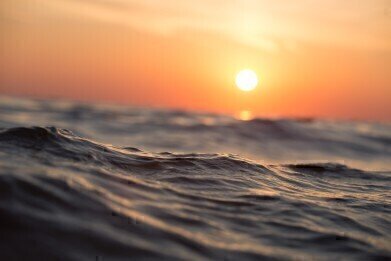Water/Wastewater
How Much of our Oceans Have We Damaged?
Aug 22 2018
The first ever systemic analysis of human impact on the planet’s oceans has revealed that a mere 13% of them have escaped unscathed from the ravages of anthropogenic activity. Conducted by the Wildlife Conservation Society, the new study classified an area as “wilderness” if it showed little effect of anthropogenic stressors such as pollution, commercial fishing and shipping routes.
Unsurprisingly, there were very few coastal waters which fell in the lowest 10 percentiles, meaning that the majority of the wilderness spots were located at the North and South Pole or in high seas. In turn, this means that these areas not within marine protection zones; in fact, only 5% of the remaining wilderness zones lie in protected waters.
A far-reaching effect
Despite the fact that 95% of the world's population live on just 10% of the land, and that land itself comprises less than 30% of the Earth’s total surface, humans have a huge impact on marine life. 86.8% of all of the oceans on the planet have been adversely affected by manmade activity in some way, whether that be through oil spills, over-fishing of waters, heavy shipping traffic or the damaging effects of climate change.
“We were astonished by just how little marine wilderness remains,” explained Kendall Jones, lead author on the new report and PhD candidate at the University of Queensland. “The ocean is immense, covering over 70% of our planet, but we’ve managed to significantly impact almost all of this vast ecosystem.”
Fishing a chief culprit
Over-fishing of the Earth’s waters was found to be one of the principal contributing factors to the degradation of underwater life. A recent study found that 55% of seas and oceans are being plundered by commercial fisheries and although the majority of these are predictably located in areas offshore from inhabited regions, the open seas are also subject to intense fishing activities.
This is because the high costs and dangerous conditions of fishing on the high seas are offset by government subsidies from many countries, amounting to a cumulative $4 billion worldwide. Jones and her colleagues are calling for a concerted conservation effort to preserve these last bastions of marine wilderness, with the UN Law of the Sea convention set to meet next month.
Conservation key
Reining in our fishing habits, restricting commercial shipping routes and reducing pollution are all important ways in which we can limit the damage we continue to wreak on our waterways. High-resolution monitoring can be particularly effective for river conservation, which can prevent plastics, refuse and other contaminants from reaching seas and oceans in the first place.
“Beyond just valuing nature for nature’s sake, having these large intact seascapes that function in a way that they always have done is really important for the Earth,” said Jones, highlighting the intrinsic value of the remaining wilderness spaces. “They maintain the ecological processes that are how the climate and Earth system function – [without them] you can start seeing big knock-on effects with drastic and unforeseen consequences.”
Digital Edition
IET 34.2 March 2024
April 2024
Gas Detection - Biogas batch fermentation system for laboratory use with automatic gas analysis in real time Water/Wastewater - Upcycling sensors for sustainable nature management - Prist...
View all digital editions
Events
Apr 30 2024 Melbourne, Australia
Apr 30 2024 Birmingham, UK
May 03 2024 Seoul, South Korea
May 05 2024 Seville, Spain
May 06 2024 Minneapolis, MN, USA


















